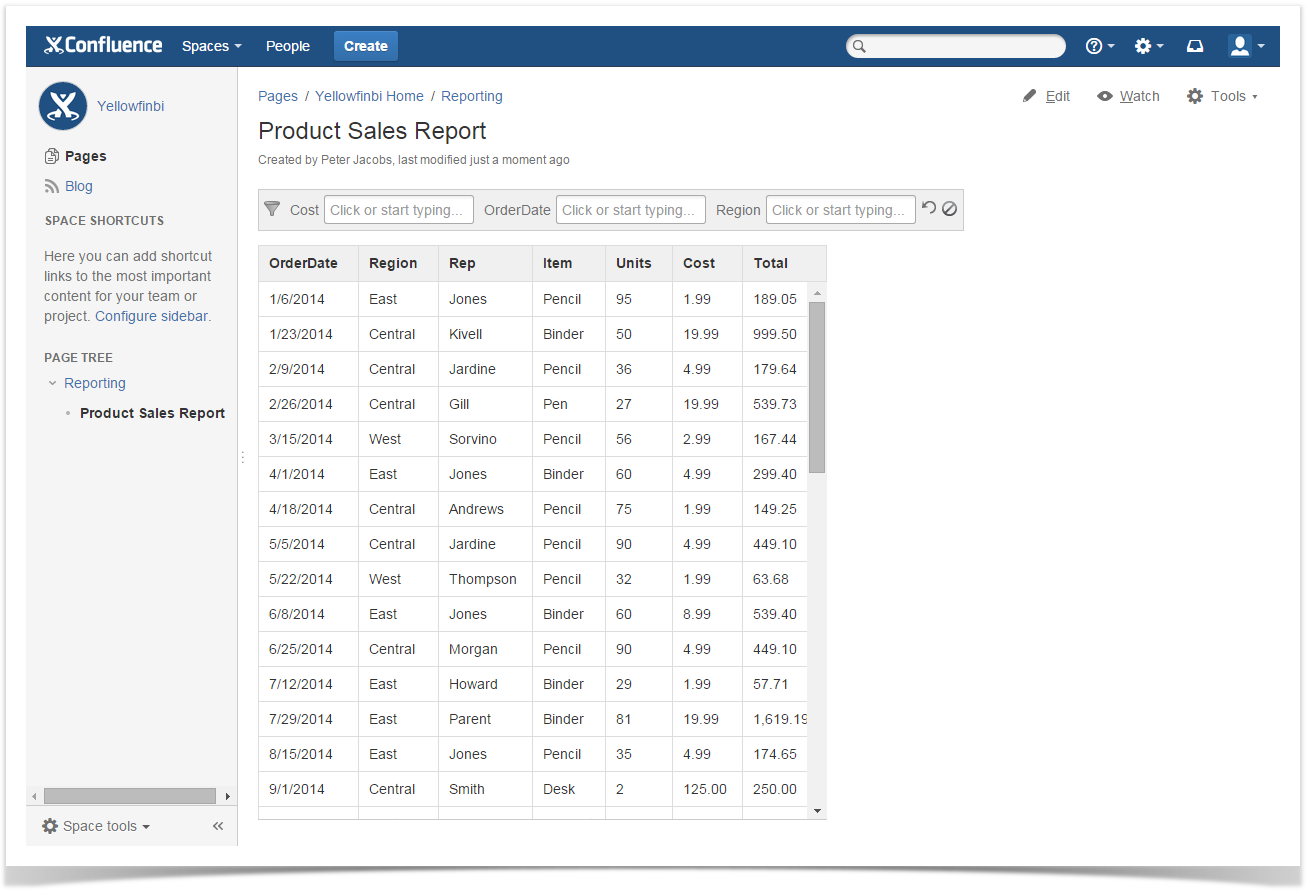We recently released versions 2.0 and 2.1.0 with a bunch of new features! Check the release notes to learn more.![]()
We recently released versions 2.0 and 2.1.0 with a bunch of new features! Check the release notes to learn more. |
This page explains
To filter a table, enter the Edit mode, find Table Filter in the Insert - Other Macros menu and insert it to the page. Then either copy and paste an already existing table or create a new table inside the macro.
To specify filtering parameters in the macro browser, click inside the macro and choose Edit in the appeared menu.
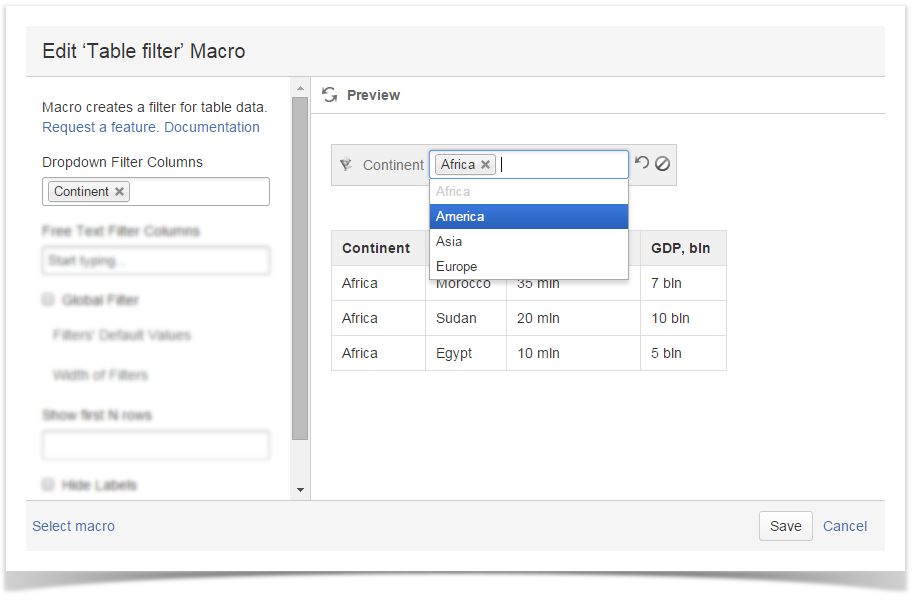
To add a drop-down list of values, enter table headers in the Column(s) field or choose them from the list.
Hover over the funnel sign in the filter pane to see the number of filtered and total rows.
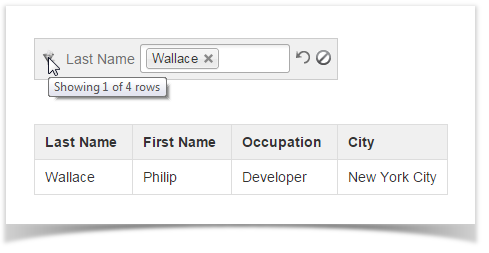
To make your work with long tables more comfortable, you can specify the number of top rows to show in the Show first N rows field. |
To filter two or more tables, place them inside the Table Filter macro. You can set up individual filters for tables (the Country filter in the example below) or filters that affect all tables (the City filter).
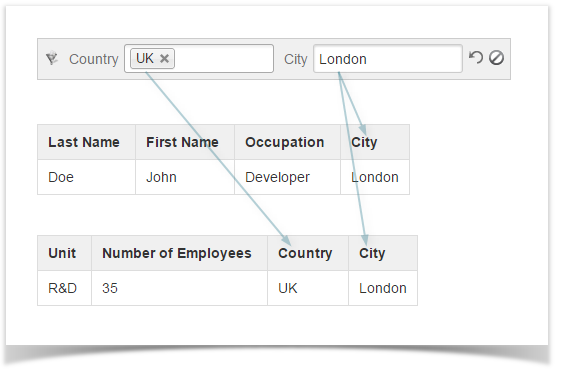
To add a textbox filter, enter the table header(s) in the User Filtered Columns field or choose them from the list.

Select the Global Filter option to enable filtering by all columns. In the example below, a regular expression is used to filter all rows containing the snippets 'Morocco' or '1500 mln' in any columns.

You can use JavaScript-style regular expressions in textbox filters.
| Regular Expression | Matched Values |
|---|---|
| [Dd]oe | Doe, doe |
| colo(u)?r | color, colour |
| Developer|Scientist | Developer, Scientist |
The full list of regular expressions is available here.
This functionality works differently in Confluence Cloud. |
Open the macro and point to the Filters' Default Values button and then click it. Select the appropriate value for the current dropdown filter.
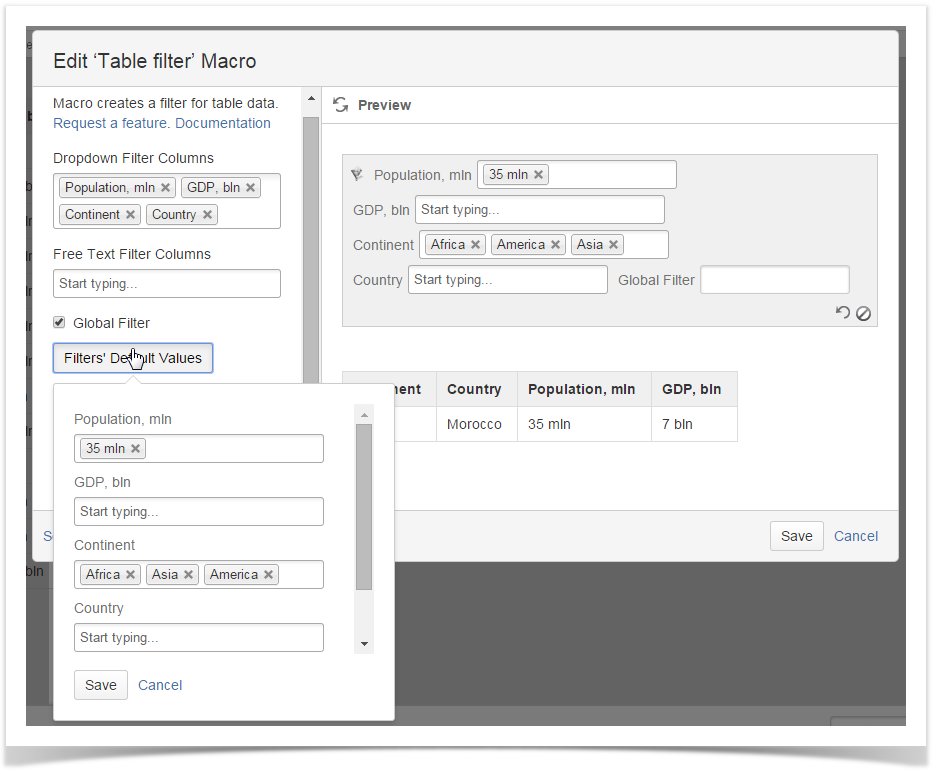
You can set multiple default values for each drop-down filter. You can delete the added default values by clicking the Close icon available on each value.
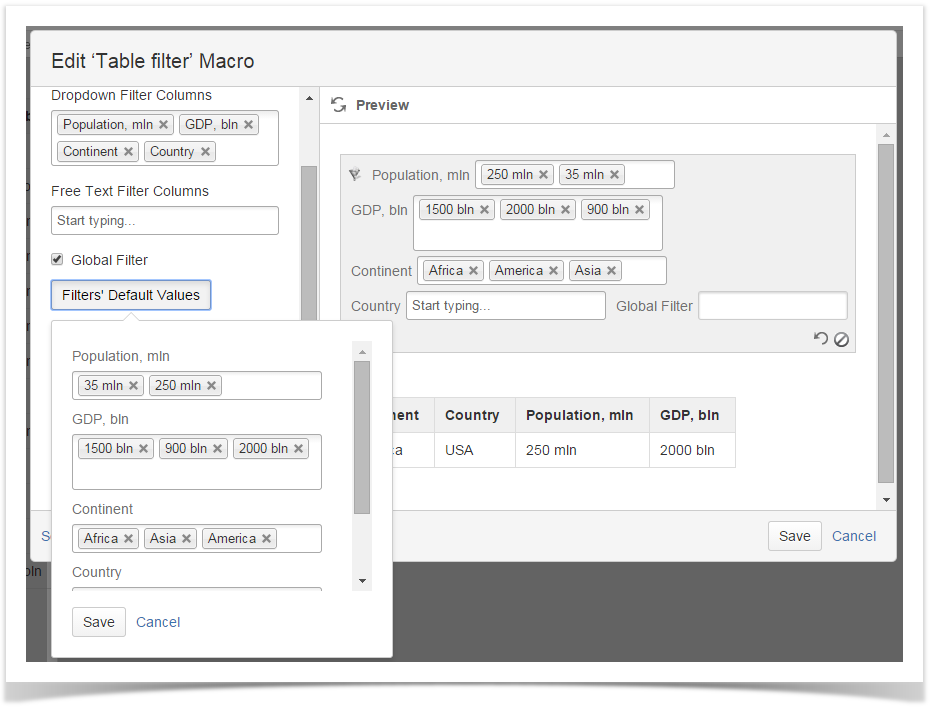
If you are using Table Filter on Confluence Cloud, you need to enumerate one default value per each column and separate these values with a comma. You can use no default value for some column, just add an additional comma.

To filter tables produced by the JIRA Issues and Taks Report add-ons, put these macros inside the Table Filter macro.
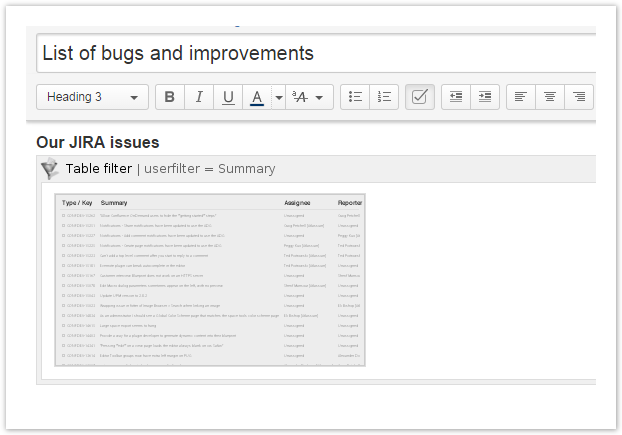
Set filters and use Table Filter as with an normal table.

You can remove filter names from the Confluence page by selecting the Hide Labels box.
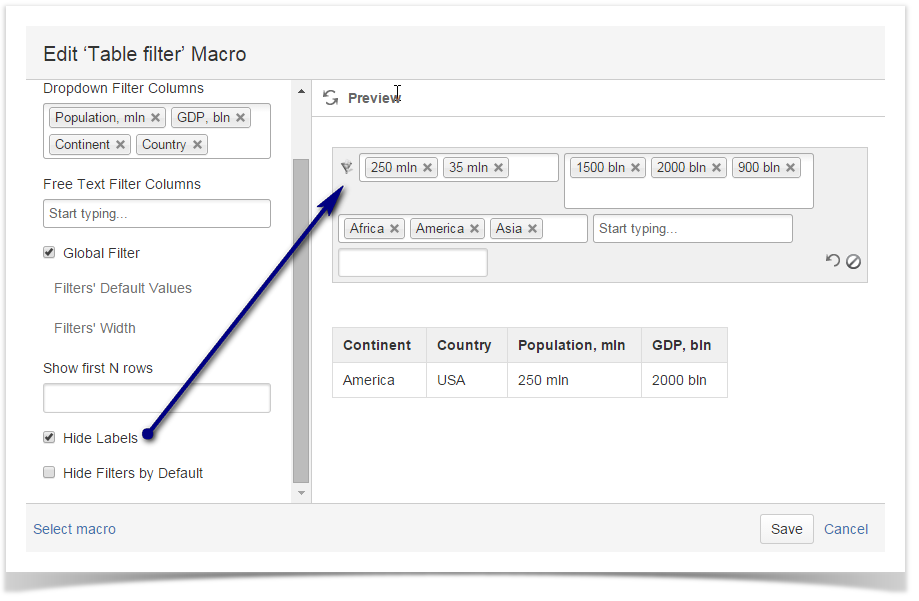
Selecting the Hide Filters by Default box will add the Show/Hide filter switch to the page, so that every user could control the visibility of the filter pane in the View mode.

Click the Width of Filters button and enter the appropriate width (in pixels) for the filter fields. You can set width for each field.
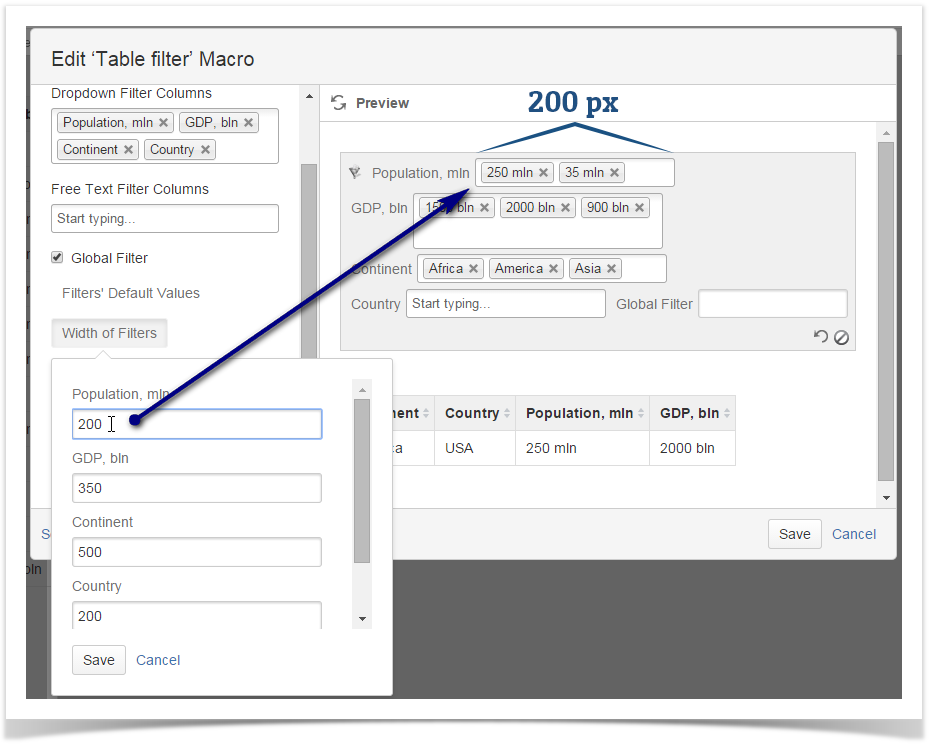
To temporarily disable filters, click the icon. All entered filter values will be restored when you enable filtering.
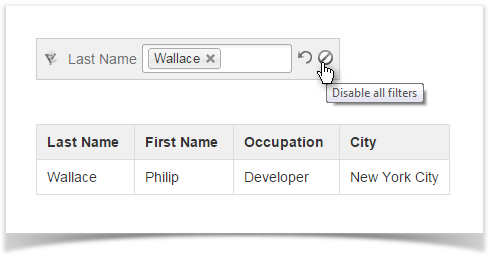
While editing the Table filter macro, select the Automatic row numbering option. Row numbers are automatically updated every time you apply some filters.

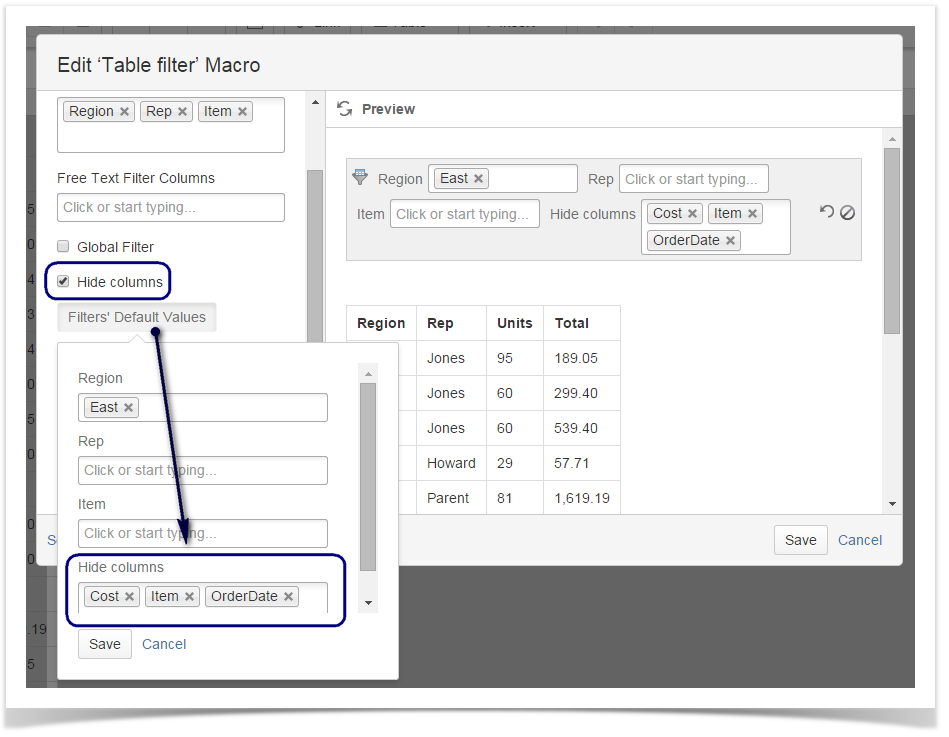
While editing the Table filter macro, select the Limit table height option. The add-on will automatically limit height of your table to fit it to your screen.
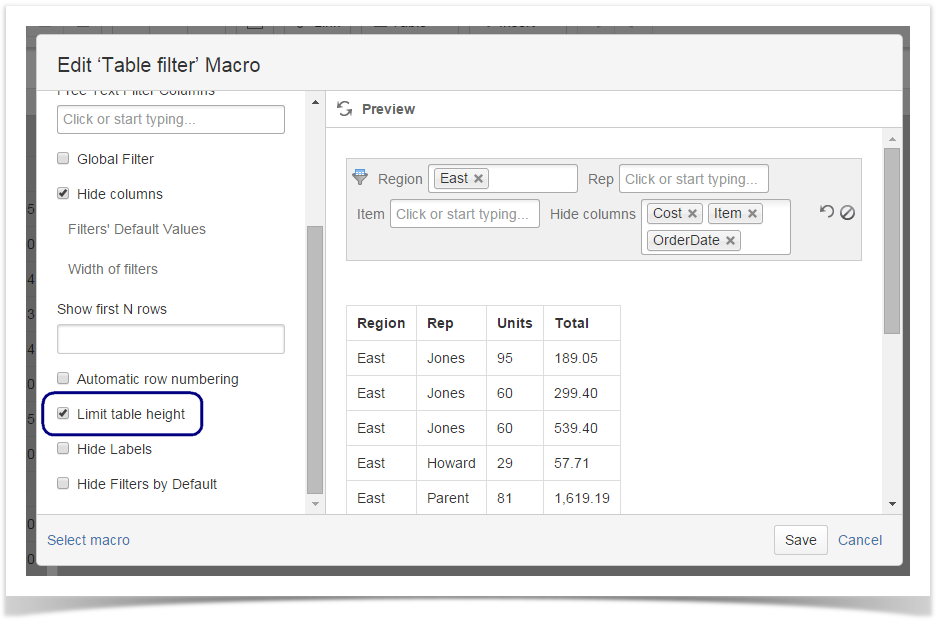
Once you have saved the page, the table will automatically fit the screen area.
